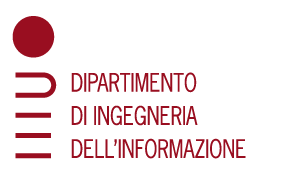Submitted by admin on
Abstract
Japan has a plan to use renewable energy in the form of centralized and/or distributed photovoltaic and wind-power generations, and the final plan is to have their total installation capacity reach more than 50% of the Japanese peak power demand in 2030. However, power system professionals have pointed out: The 6.6-kV Japanese radial power distribution system, on which a number of distributed power generators based on renewable energy will be installed, may suffer from power fluctuation inherent in renewable energy. This fluctuation may make it difficult to comply with the Japanese utility voltage regulation (in a range of 95 to 107 V in the single-phase 100-V, 50/60-Hz system), and moreover may make it difficult to keep the line frequency of the whole power system network.
The on-going smart grid research project supported by the Japanese government investigates the possibility of using distributed power loads such as pure electric vehicles, heat pumps, and heat energy storage devices to control the line frequency of power systems.
This talk starts with an overview of the Japanese smart grid research project, and presents the power electronics technologies related to it, including flexible, reliable, and fault-tolerant battery energy storage systems for grid connections, which are based on modular multilevel cascade converters and advanced battery units. These 'environmentally-friendly' systems are characterized by high efficiency, low voltage/current harmonics, and low electromagnetic-interference (EMI) emission.
The talk is organized as follows:
1. Overview of the Japanese smart grid
2. The nuclear power plant disaster on March 11, 2011
3. A battery energy storage system (BESS) and a STATCOM for renewable energy
Short bio
Hirofumi Akagi was born in Okayama, Japan, in 1951. He received the Ph. D. degrees in electrical engineering from the Tokyo Institute of Technology in 1979. In 1979, he joined the Nagaoka University of Technology, Japan, as an Assistant and then Associate Professor in the department of electrical engineering. From 1991 to 1999, he was a Professor in the department of electrical engineering at Okayama University, Japan. Since January 2000, he has been a Professor in the Department of Electrical and Electronic Engineering at the Tokyo Institute of Technology.
His research interests include power conversion systems, motor drives, active and passive EMI filters, high-frequency resonant inverters for induction heating and corona discharge treatment processes, and utility applications of power electronics such as active filters, self-commutated BTB (back-to-back) systems, and FACTS (flexible ac transmission systems) devices. He has authored and coauthored more than 100 IEEE Transactions papers and two invited papers published in Proceedings of the IEEE in 2001 and 2004. The total citation index for all his papers in Google Scholar is some 18,000 times. He has made presentations many times as a keynote or invited speaker internationally.
He received five IEEE Transactions Prize Paper Awards and 10 IEEE IAS Committee Prize Paper Awards. He is the recipient of the 2001 IEEE William E. Newell Power Electronics Award, the 2004 IEEE IAS Outstanding Achievement Award, the 2008 IEEE Richard H. Kaufmann Technical Field Award, and the 2012 IEEE PES Nari Hingorani Custom Power Award. He was elected as an IEEE Fellow in 1996 and as IEEE PELS and IAS Distinguished Lecturers for 1998-1999. Dr. Akagi served as the President of the IEEE Power Electronics Society from Jan. 2007 to Dec. 2008 for two years.






